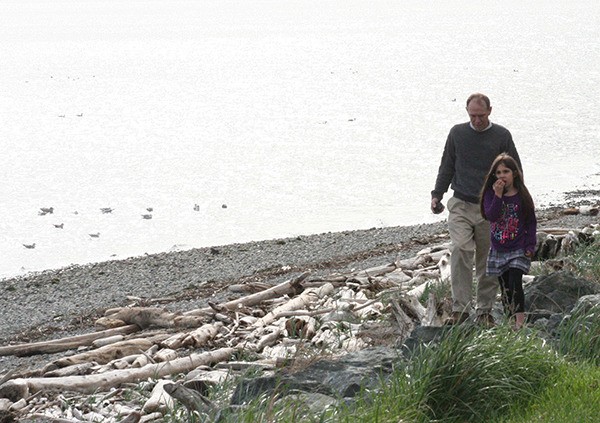The scenic acreage that surrounds Monroe Landing has been a home and refuge to many.
Initially one of three Salish villages located on the shores of Penn Cove, the beach made a perfect canoe landing area and temporary encampments cropped up around the cove.
Rich in water, prairie and forest habitats, the area was also ideal for fishing, hunting and farming for early settlers.
It is this area’s history of farming and aquaculture that the Whidbey Camano Land Trust is attempting to secure by purchasing more than 300 acres of development rights around Monroe Landing.
People want to see the area preserved for many different reasons, said Pat Powell, executive director of the Land Trust.
“The property means different things to different people,” Powell said.
Community hopes for the property include the conservation of historical farms that lay within Ebey’s Reserve, maintenance of open space, safeguarding of undeveloped area around the airport, and protection of scenic elements and wildlife habitats, she said.
The proposed conservation includes the VanderVoet Farm, “a beloved and iconic landscape on Whidbey Island” that is the “scenic backdrop to the historic and popular Blue Fox Drive-in theater and is a much viewed pastoral entryway to Oak Harbor,” according to the application for Conservation Futures funds.
Powell said that while the funding they’ve secured is mainly for conservation efforts — such as for farmland, wildlife and aquifer protection — it can have ancillary benefits as well.
Commissioner Rick Hannold, who campaigned on pushing economic development for the county, said conserving the farmlands at Monroe Landing would provide the buffer for the nearby airport.
Hannold said the owner hopes to get the airport fully functioning again and keeping new development from surrounding it will prevent future “heartburn” about the noise.
“What you’re doing is saying we can save the rural character but it’s a reality that life there has to be jobs for people,” Hannold said. “It’s thinking forward.”
Last week, Island County commissioners agreed at work session to pay out $610,000 from the Conservation Futures Fund to the Land Trust to acquire conservation easements on 267 acres of farmland and 52 acres of forest habitat. A final vote on the funding will be held at a future Tuesday meeting.
This money was originally earmarked in November.
The project protects the 319 acres while keeping it as productive working farms, according to county documents. The purchase of these easements would connect two isolated county-owned properties and provide a trail easement for the future.
The Conservation Futures funds are being leveraged with up to $850,000 from the National Resources Conservation Service, up to $560,000 from the state Recreation Conservation Office and up to $300,000 from the U.S. Navy.
While the process has been moving forward slowly over the last couple of years, there are still steps to be taken.
Powell said the property owners in question are interested in selling the development rights but an agreement has to be made.
“Before we can move forward to protect these properties, we will make a fair market value offer to the owners, based on appraisals, which are, right now, being independently reviewed and approved,” Powell said. “At that point, it is up to the owners to decide to accept the offer or not. This is all about private property rights and willing landowners. It is critical that the proposal works for the private landowners.”




